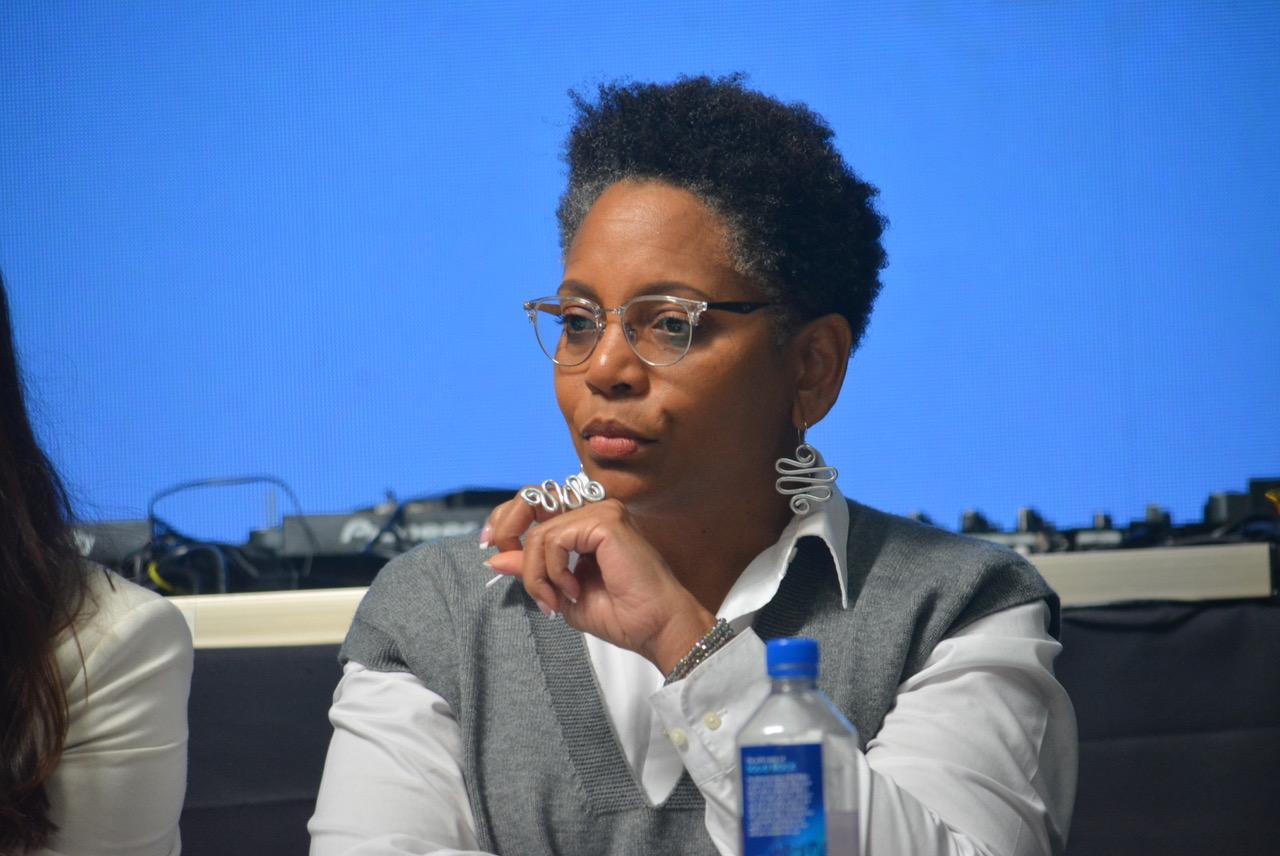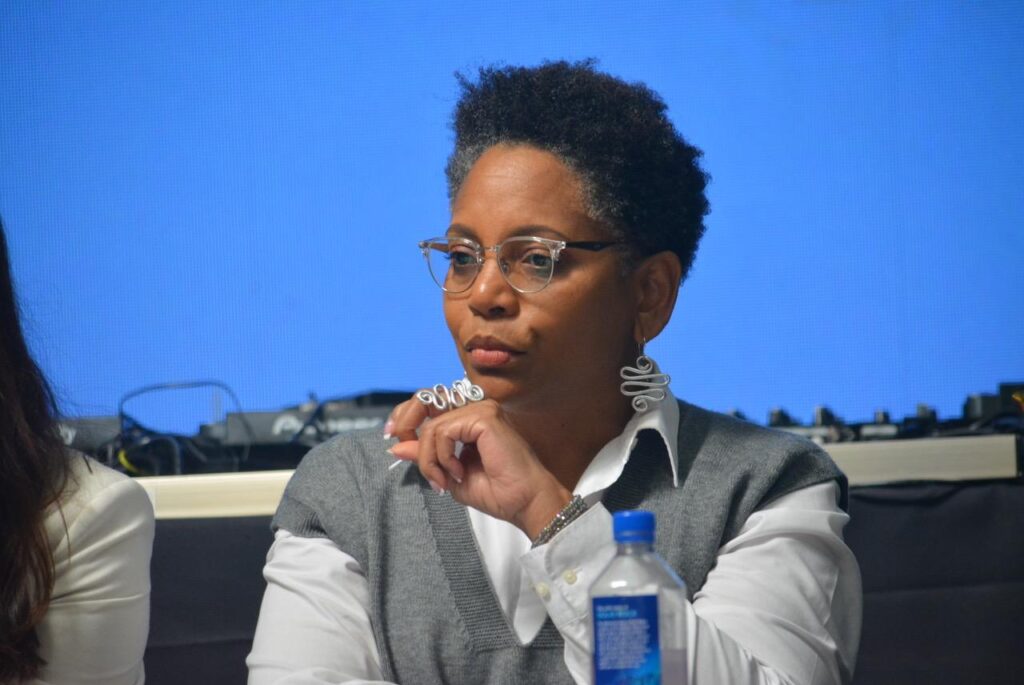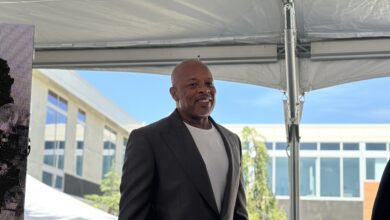Working Group: More Entry-Level Homes Could Help Solve Housing Crisis

By Antonio Ray Harvey | California Black Media

Tia Boatman-Patterson, CEO and President of California Communities Reinvestment Corporation says there should be more affordable “entry-level homeownership” in California for Black and Brown communities. Boatman-Patterson is also a former Associate Director for Housing, Treasury, and Commerce in the Office of Management and Budget for the Biden Administration. April 23, 2024. CBM photo by Antonio Ray Harvey.
The Community Housing Working Group hosted a briefing on April 23 at Cafeteria 15L in Sacramento. Discussions focused on how the housing crisis in California affects Black and Brown communities and explored ways to provide low-income families and individuals with affordable housing.
Tia Boatman Patterson, CEO and President of the California Communities Reinvestment Corporation, said “entry-level housing” is not available as it was in the past, adding that affordable units were a major point of entry into homeownership for many families in the Black community.
“My mother bought her first house when I was in junior high. It was an 850-square foot, two-bedroom and one-bathroom house in 1978. That house cost $30,000,” Boatman-Patterson said.
“A woman working part-time at JCPenney was able to afford that house. We don’t build these types of housing now. We do not build entry-level homeownership,” she added.
The Community Housing Working Group is a collection of diverse community organizations from across California working together to address housing challenges in their communities. The organization believes that solving the affordable housing crisis will require creating enough smaller, lower-cost, multi-family homes located near jobs, transit, and good schools.
The briefing included a panel discussion titled, “Exclusionary Zoning: A Look Back and a Path Forward.” Boatman-Patterson participated in that session along with Henry “Hank” Levy, Treasurer-Tax Collector for Alameda County, and Noerena Limón, consultant, Unidos U.S., and Board Member of California Housing Finance Agency.
Boatman-Patterson, a former Associate Director for Housing, Treasury and Commerce in the Office of Management and Budget for the Biden Administration, started her presentation by highlighting how exclusionary single-family zoning is contributing to continued segregation of California communities.
She said that single-family zoning originated in the Bay Area city of Berkeley in 1916.
“By creating single-family zoning and having fenced-off communities, you were able to exclude the ‘others,’” Boatman-Patterson said. “It really was a method to exclude — what they called ‘economic segregation’ — but that was a guise for racial segregation. Single-family zoning, along with redlining, became a systemic approach to exclude based on affordability.”
Title VIII of the federal Civil Rights Act of 1968 — commonly known as the Fair Housing Act of 1968 – is the U.S. federal legislation that protects individuals and families from discrimination in the sale, rental, and financing of housing. It was passed to open the doors to affordable housing.
In an effort to increase housing the housing inventory in California to help address the state’s ongoing housing crisis, lawmakers in 2021 passed Senate Bill (SB) 9. That law allowed Californians to build up to four residential units — including triplexes, duplexes and residential dwelling units (RDUs) — on their properties in areas that were previously zoned for single-family homes only.
Last week, a Los Angeles Superior Court Judge declared SB 9 unconstitutional. That ruling affects 121 charter cities that have their own local constitutions and want to maintain the independence and authority to make their own land use decisions.
In 1968, 65.9% of White families were homeowners, a rate that was 25% higher than the 41.1% of Black families that owned their homes, according to National Low-Income Housing Coalition. Today, those figures have hardly changed in the Black community, although White homeownership has increased five percentage points to 71.1%.
Boatman Patterson said the rate has not changed in Black and Brown communities because financing for affordable entry-level homes is almost nonexistent. The homeownership disparities contribute to the disturbing racial wealth gap in the nation, according to the National Low-Income Housing Coalition’s October 2018 report.
“We really must align the financing with the actual building of units, which we haven’t necessarily done. Because of this misalignment, I think we continue to see problems,” Boatman-Patterson said. “All these laws were supposed to address the ability to buy and purchase and to now have opportunities, but we don’t align financing with what we do.”
The other key aspects of the briefing and panel discussion included the impacts of exclusionary single-family zoning on communities of color, policies to prioritize to create more equitable housing choices, and the importance of creating more housing options to drive economic mobility and increase local revenue and investment in communities.
The panelists not only brought their expertise to the conversation. They shared their backgrounds and personal experiences as well.
Limón said her father, a tree trimmer, bought an entry-level house for about $46,000. Based on that, she understood that “homeownership is foundational for wealth creation, property tax collection for the state, and to ensure that people can take out loans to send their kids to college,” she said.
“The fact that the entry-level homeownership supply is the most under-supplied units really exacerbates the prices we are seeing today,” Limón said.
The moderator for the briefing and panel was Konstantin Hatcher from California Yes, In My Back Yard (YIMBY), a statewide advocacy organization working to pass legislation to end the state’s housing shortage and affordable communities.
In closing, Hatcher said he hopes that the housing crisis in California subsides soon.
“Hopefully a decade from now we’re not having this same conversation and we have seen the needle move and that opportunities have moved evenly across California,” Hatcher said.




